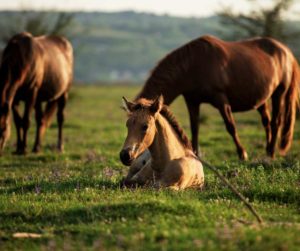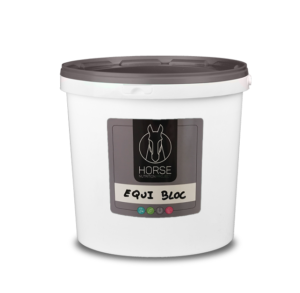Horses and pasture: what do you need to know?
Saying that the horse is a herbivore may seem easy. However, the current use of horses results in great variations both in terms of access time and the quality of the pastures available. Thus, access to pasture for a top-level sport horse is not considered in the same way as in breeding farms. However, grazing is essential from a nutritional, locomotor and psychic (behavioral) point of view for the horse, whatever its use.
Knowing how to manage the plant ecosystem of a meadow, use the food resources offered efficiently, take into account parasitism, toxic plants … are all necessary knowledge for a reasoned use of pasture.

Meadow, an ecosystem to pamper
A grazed meadow is a complex biological system that is constantly changing. The main players in this ecosystem are the climate, the soil (including decomposing insects), the plant part and the horses (or other herbivores). The foliar part of plants absorbs atmospheric CO2 and nutrients (water, carbon, nitrogen, phosphorus, etc.) contained in the soil to ensure their growth. This developing vegetation cover is in turn ingested by horses to meet their own metabolic needs. Some of this ingestion is not fully utilized and returns to the soil through the droppings. These droppings accumulate in the soil and are transformed by the decomposing microorganisms into essential nutrients for the plant. The loop is thus complete.
This cycle is therefore strongly dependent on herbivores (here horses), on management practices of human origin (supply of fertilizers, tillage, mowing, etc.). The latter aim to increase the dry matter yield of meadows, unfortunately often to the detriment of floristic diversity (number and type of different plant species present).

EquiBloc
EquiBloc provides essential minerals, trace elements and vitamins during grazing season for young growing horses and broodmares.
Impact of horses on the grassland ecosystem
The impact of horses on a meadow is linked mainly to two types of horse behavior. Its very selective feeding behavior which leads to the appearance of excessively grazed areas with very low plant cover and depletion of phosphorus and potassium, and rejection areas with very high plant cover. In addition, the division of the pasture into different zones: feeding zones, resting zones and zones of accumulation of manure (phenomenon linked to the social behavior of the horse) aggravate this phenomenon of impoverishment on one side and enrichment in excess nitrogen on the other.
Finally, the mechanical phenomenon of trampling linked to the horse’s need to evolve in its space and its great propensity to trace paths must also be taken into account. If the meadow is, at any given time, the only source of food, it is easier to understand that the area needed per horse is at least half a hectare.
Grass as feed for the horse
The amount of nutrients a horse can extract from grass depends primarily on its ability to eat it. We speak of ingestion capacity. This ingestion capacity depends on two factors: the speed at which the horse grazes and the time it devotes to it in 24 hours. Horses have very powerful incisors that allow them to literally cut plants flush with the ground. When the grass decreases, the horse is able to partly compensate for this rarefaction by increasing its rate of ingestion, but this is a mechanism that is limited.
The horse spends an average of fifteen hours a day grazing when he is in the meadow 24 hours a day. This only leaves him more limited time for other activities essential to his needs (rest, elimination, social behavior, etc.). The increased time spent grazing induced by the decrease in grass availability comes with an energy cost that should not be overlooked.
Grass is historically and culturally considered to be the feed of choice for the horse. We must nevertheless strongly qualify this statement. Indeed, the quality and digestibility of the herb is constantly evolving and this must be taken into account. For example, grass in spring is often too much for the needs of horses and can become very insufficient in very dry summer, for example. From a qualitative point of view, we go from a young herb with a surplus of water, nitrogen, sodium and soluble sugars to an overly aged herb which has become rich in cellulose and whose digestibility is much lower. Everything is strongly dependent on weather conditions, soil, floristic composition …
Some tips for efficient grazing
Grazing in plots or rotating is carried out by dividing the area into several lots which are grazed successively. Observe the rule of 20 days of regrowth in spring and depending on weather conditions 30-40 days in summer and autumn. More practical, we open a plot when the grass reaches the level of the ankle malleolus and we close it when the grass is between 8 and 10 cm.
If you want to work with a single plot, you must plan to harrow it to spread the dung and mow the refusals at least twice during the season.
Maintain grasslands by weeding unwanted plants manually or by working with a selective weedkiller. The phosphorus and potassium contributions are preferably made at the end of autumn (after the horses return for wintering) and are respectively 60 and 160 units per hectare. For nitrogen fertilization, be careful and apply 25-50 units per hectare no later than mid-February.
Grazing in combination with other species with less selective feeding behavior than the horse is also a good way to deal with refusals. The passage of sheep on plots already grazed by horses is very efficient.
Grazing and parasitism
The internal parasites of the horse are quite numerous. We find tapeworms (cestodes and trematodes, roundworms (nematodes) but also insect larvae and protozoa. In pasture, we must focus on infestations by large and small strongyles in adults and in young people. a cestode Anoplocephala (also in adults, especially in the case of co-grazing with donkeys) .Horses become infected by ingesting grass which carries parasite larvae from the faeces of other horses or intermediate hosts.
Beyond a reasoned deworming program over time and based on the analysis of dung, there are methods to reduce the risk of infestation. Thus the mixed grazing between horses and ruminants makes it possible to break the cycles of reproduction of the parasites since these are different between the species. Avoid grazing in winter because the larvae can resist several months and therefore winter grazing is a source of re-infestation. A coprological control of individuals before weeding remains the panacea and should be essential before the introduction of a new individual. Finally, the parasite load of a plot is closely related to the load of individuals grazing this plot.

